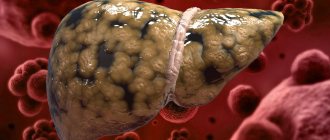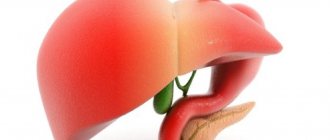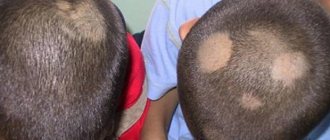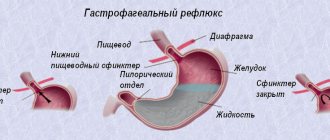Pain in the left hypochondrium is associated with many different diseases. Organs located nearby may be involved in pathological processes. In order to make a correct diagnosis, it is important to clarify the nature and location of the accompanying symptoms. Read more about everything below.
Photo: pixabay.com
Stomach ailments
With gastritis, it is often not only a stitch in the left side under the ribs in front. Discomfort is also accompanied by nausea, vomiting, lack of appetite, diarrhea, and dizziness. If you experience these symptoms, you should immediately consult a doctor. At the initial stage of gastritis, the pain may be tolerable, belching appears, loss of appetite, diarrhea, and bloating. This may occur periodically; in this case, you need to be examined by a doctor; it is better to prevent than to miss the disease. It can also be in acute form.
Nature of pain
To clarify the preliminary diagnosis, it is necessary to determine the intensity and quality of the described symptom. Severe pain in the left hypochondrium is often a signal of acute inflammation and requires immediate medical attention. Weak, but constant, debilitating discomfort indicates a sluggish pathological process in a chronic form.
Aching pain in the left side under the ribs
With this nature of the clinical manifestation, most people adapt to the unpleasant sensations and tolerate them, postponing a visit to the doctor. Aching pain in the left hypochondrium is a frequent companion to chronic pathologies of the digestive and urinary systems:
- colitis;
- pyelonephritis;
- gastritis;
- colitis;
- enteritis;
- ulcers of the stomach, intestines;
- pancreatitis;
- cholecystitis;
- duodenitis.
The listed diseases are accompanied by other symptoms:
- nausea;
- weakness;
- fast fatiguability;
- bowel disorders;
- lack of appetite;
- rarely – vomiting.
Sometimes a nagging pain in the left side under the ribs indicates the progression of other ailments not related to digestion:
- pre-infarction condition;
- cardiac ischemia;
- inflammation of the appendages;
- oncology of nearby organs, lung;
- enlarged spleen;
- cirrhosis of the liver.
Sharp pain in the left side under the ribs
An intense, unbearable syndrome is a symptom of a severe inflammatory process. Sharp pain in the left side under the ribs, occurring during a deep breath or fast, rapid movements, is considered a sign of intercostal neuralgia. The discomfort disappears after changing body position, but returns almost immediately. It is difficult for a person to breathe, and a feeling of fear and panic may arise.
Stitching pain in the left side under the ribs always accompanies serious organ damage due to mechanical injuries. In such a situation, it is important to immediately go to the hospital; there is a danger of internal bleeding, rupture of the spleen, renal pelvis, fractured ribs and similar pathologies. Other reasons that provoke acute pain in the left hypochondrium:
- purulent pancreatitis;
- perforated stomach ulcer;
- strangulation of a kidney cyst;
- intestinal perforation;
- splenic hematoma;
- renal colic.
Dull pain in the left hypochondrium
Similar to the aching form, this nature of the pathological condition is characteristic of chronic diseases. A dull pain in the left side under the ribs can occur after abuse of alcohol or “heavy” foods. In such cases, it disappears on its own, subject to normalization of the diet. If the pain syndrome is stable, observed regularly or constantly, it can be provoked by the following reasons:
- oncological tumors of the digestive organs;
- stomach ulcer;
- gastritis;
- pancreatitis;
- nephritis;
- enlarged spleen due to infections, endocrine, autoimmune pathologies;
- colitis;
- uric acid diathesis;
- glomerulonephritis;
- unilateral pleurisy;
- pneumonia.
Throbbing pain in the left side under the ribs
The feeling of twitching inside is characteristic of chronic progressive pancreatitis. A stabbing pain in the left hypochondrium is replaced by pulsation, as if there is an abscess in the indicated area. This is an extremely dangerous phenomenon that can result in severe shock. In addition to the pain syndrome in chronic pancreatitis, accompanying symptoms are observed:
- bloating;
- vomit;
- diarrhea;
- sweating;
- chills;
- increased body temperature;
- swelling of the limbs;
- complete lack of appetite;
- constipation;
- change in taste perception;
- bitterness in the mouth;
- weakness;
- night sleep disturbances;
- thirst.
Burning pain in the left side under the ribs
Pregnant women in the last stages of pregnancy often suffer from the described symptom. Pain and burning in the left hypochondrium is caused by strong pressure on the internal organs from the enlarged uterus. The closer the due date, the more intense the problem under consideration. In other cases, burning, sharp pain in the left hypochondrium is explained by the following pathologies:
- diaphragmatic hernia;
- mechanical damage to the digestive organs;
- neuralgia;
- heart attack;
- cardiomyopathy;
- arterial thrombosis of the spleen;
- splenomegaly;
- duodenitis;
- colitis;
- pyelonephritis;
- bladder infection;
- rheumatism;
- stomach ulcer;
- oncology.
Pressing pain in the left side under the ribs
This variant of the clinical picture often accompanies chronic kidney diseases. Mild to moderate pressing pain in the left hypochondrium has the following causes:
- inflammation of the spleen;
- pancreatitis;
- duodenal ulcer (discomfort mainly after eating);
- stomach cancer;
- food intoxication;
- myocardial infarction;
- angina attack;
- intestinal obstruction;
- fecal stones;
- inflammation of the ovary;
- gastritis.
Chronic gastritis
Most often, signs appear within a few hours after taking harmful foods, medications, or chemicals. The main cause of gastritis, in which it stings in the left side under the ribs in front, is poor nutrition. The acute form is treated quickly. First you need to cleanse your stomach. On the first day - only liquid food (kefir, soup), the second - soft food (porridge, jelly), diet for 5 days.
Drug therapy is also used. As a rule, after this gastritis recedes, but you should always remember about a balanced diet. The chronic form takes longer to treat. It is not possible to recognize it for a long time, since it may not manifest itself, and after the symptoms appear, it disappears, and a stage of remission begins. Treatment requires a constant diet and gastroprotective medications prescribed by a doctor.
What to do if your stomach hurts during pregnancy?
traditional methods of treating stomach pain Unpleasant sensations in the stomach area in expectant mothers are associated with stomach ulcers, gastritis, and also with the fact that organs are displaced due to the fact that the uterus begins to grow. During this period, it is very important not to overeat, stick to a diet, and you may have to take medications that can help reduce the acidity of stomach juice. Also, during pregnancy, you should not overeat at night and under no circumstances should you take anything without a doctor’s advice; this can greatly harm the fetus.
Nature of stomach pain during pregnancy
In acute conditions, first of all, it is necessary to eliminate pain, and only then carry out therapeutic measures in a hospital setting.
Patients who are aware of the presence of chronic diseases must master methods and methods for eliminating acute attacks of pain. To do this, you must always have with you medications recommended by your doctor, especially for heart pathologies, stomach ulcers, and intestinal problems.
Symptomatic treatment should only be carried out by a doctor, because self-medication can distort the symptoms of the disease, aggravate its course, lead to complications, and even death. In such cases, you cannot rely on treatment recommended in the media, by friends, on the Internet, without first finding out the cause of the pain in medical institutions, passing the necessary tests and undergoing a full diagnosis.
Any pain under the left rib in the front or back should be grounds for visiting a doctor. Usually, they first contact a therapist, who, based on the identified symptoms, will refer you to a more specialized specialist.
During the initial diagnosis, it is first necessary to exclude possible surgical pathologies, such as:
- Splenic rupture
- Renal rupture
- Volvulus
- Inflammation of the appendix
Writing is my favorite pastime. Sometimes it seems to me that I learned to do this before I learned to read and walk.
In medicine, there are known signs of diseases, each of which indicates not one disease, but several possible ones. Such signs are called symptoms. An example of a symptom is heaviness in the left hypochondrium.
In practice, symptoms are not considered one at a time, only in groups. Thus, heaviness in the left hypochondrium is often accompanied by pain of varying degrees of strength and different nature. Associated symptoms are observed: disorders of stool, digestion, fever, chills, weakness, nausea, vomiting, etc. Patients, in some cases, specify the localization (location) of unpleasant sensations: heaviness appears in the left side under the rib or heaviness in the sides.
Symptoms grouped together are called syndromes. The syndrome already indicates a certain disease.
Heaviness in the left hypochondrium, along with other symptoms, may indicate a wide group of diseases. First of all, these are diseases of the abdominal organs: pancreas, spleen. Dull pain and heaviness under the left rib often mean gastritis, as well as a stomach ulcer. This symptom is likely and causes alarm when blood cancer has begun.
- In the case of acute pancreatitis (inflammation of the pancreas), a feeling of heaviness under the left rib develops into an unbearable girdle pain in the upper abdomen, which does not stop and radiates to the back. Nausea, increased weakness, and vomiting. The temperature may rise. It is mandatory to call an ambulance and subsequent hospitalization to avoid dangerous complications.
- Diseases of the spleen are also characterized by heaviness on the left side under the rib - for example, a splenic cyst or tumor. In cases of pain accompanying heaviness, as well as with an increase in temperature, it may be possible to talk about an infarction of the spleen or its abscess (pain radiates to the left shoulder). With timely medical help, all diseases of the spleen, except cancer and sepsis, have a favorable treatment outcome.
- In chronic and acute gastritis, the gastric mucosa is inflamed. The disease can last for years. Exacerbations and periods of calm alternate.
In acute gastritis, heaviness on the left side of the stomach is characteristic. Along with this, the patient feels fullness in the left side. Soon after eating, he begins to feel sick, vomiting undigested food, mucus and bile. The temperature is rising. With timely assistance from a doctor, gastritis can be stopped for a long time.
With chronic gastritis, for a long time there may be no symptoms at all that indicate it; the disease is “waiting” for an exacerbation. Chronic gastritis is dangerous because over time it causes more severe illnesses: stomach ulcers, tumors, polyps of the stomach and intestines.
- Today, stomach ulcers are treated successfully, unless we are talking about its perforation or degeneration into a cancerous tumor. The onset of the disease is felt as a heaviness on the left under the rib. Later, pain in the pit of the stomach begins, usually not strong, dull and long-lasting; Painkillers don't help. Heaviness and pain are usually felt before eating and are associated with a feeling of hunger. Heartburn, frequent constipation, and sour belching are possible. With severe heaviness and pain, vomiting occurs, after which it becomes easier. Seeing a doctor if these symptoms occur will save the patient’s life and significantly increase the chances of cure.
- In the case of chronic myeloid leukemia, tingling and heaviness are observed in the left hypochondrium. When palpated, patients discover some kind of compaction in this place. Unfortunately, this cancer is incurable and ends in death. But if you urgently contact an oncologist, the patient has a chance to extend his life from two to five years. Of these, for about 3 years, health will be in relative balance and will not torment the doomed person. If treatment is not carried out, patients die much earlier.
Problems with the cardiovascular system
If it stings under the left rib in the front, these may be signs of a heart attack. They are easier to detect. When moving, difficulty breathing, lingering pain in the left ventricle of the heart, nausea, vomiting, hiccups, diarrhea, pale swollen face, increased sweating, blue lips. If these signs appear, you should urgently call a doctor. Heart attacks are no joke. If it occurs, you can only help in the first couple of hours, when the resulting blood clot is still easy to dissolve.
Recovery after a heart attack is long. You will have to reconsider your habits and lifestyle. You will need to take medications constantly. The main groups of people at risk of heart attack are men, women over 50 years of age, smokers, those who are overweight, those with high blood pressure, and those with diabetes. In this case, prevention rather than subsequent treatment is important. It will last for the rest of your life. Prevention is as follows:
- maintain normal blood pressure;
- monitor blood sugar levels;
- quit smoking;
- reduce excess weight;
- walk more in the fresh air.
Symptoms
Heaviness in the left hypochondrium almost never acts as an independent clinical sign. The exception is physiological reasons. It is worth noting that the malaise can be either permanent or periodic.
The symptomatic picture is individual, as it depends on the underlying cause. There are a number of external manifestations that most often accompany heaviness and swelling on the left under the ribs:
- aching and dull pain, which, as the underlying disorder progresses, can become pronounced and frequent;
- increased gas formation;
- rumbling in the stomach;
- nausea and vomiting;
- problems with bowel movements;
- decreased appetite - due to heaviness immediately or some time after eating;
- swelling of the anterior wall of the abdominal cavity;
- weight loss;
- weakness and weakness;
- heartburn;
- belching;
- the appearance of blood inclusions in feces;
- profuse sweating, especially during night rest.
If the source of the anomaly is kidney disease, the clinic will be as follows:
- pain spreading to the lower back;
- swelling of the lower extremities and face;
- increased urge to urinate;
- changes in the consistency and color of urine;
- painful pale skin;
- decrease in blood pressure levels.
In cases of damage to the spleen, additional symptoms may include:
- frequent exposure to colds, which occurs due to a decrease in the resistance of the immune system;
- splenomegaly or organ enlargement;
- slight increase in body temperature.
A feeling of heaviness in the hypochondrium on the left side, which appears against the background of one or another pathological process in the liver, will be accompanied by the following symptoms:
- yellowness of the skin, mucous membranes and sclera;
- dyspeptic symptoms;
- nausea leading to vomiting - bile impurities will be observed in the vomit;
- decreased performance;
- frequent mood changes;
- severe skin itching;
- bitter taste in the mouth;
- darkening of urine;
- discoloration of stool.
With heaviness in the left hypochondrium in front, cardiovascular pathologies occur. The clinic may include:
- sharp or cramping pain in the heart or sternum;
- increased heart rate;
- dyspnea;
- respiratory dysfunction;
- increase in blood pressure.
The occurrence of severity should be an impetus for seeking qualified help, otherwise the risks of developing complications are high, and death is not an exception.
Respiratory system
Stitching under the left rib in the front and with problems with the lungs: collapse, hypertension, pneumonia. The second disease is difficult to diagnose, like the first; the main symptom is shortness of breath and stabbing pain. If a cough occurs, you should immediately contact a doctor for help. This is a local doctor, a pulmonologist, a resuscitator, and a cardiac surgeon. Diagnosis must be comprehensive, since the disease is difficult to detect at an early stage. The cause of a cough can also be a harmless virus. Signs of pneumonia: fever, chills, cough with sputum, fatigue. If the disease is diagnosed in time, it can be treated within 10-14 days. Antibiotics are mainly used.
Etiology
A feeling of heaviness in the left hypochondrium is caused by the occurrence of some disease from the internal organs that are located in this area. The target segments in this case are:
- diaphragm;
- stomach;
- spleen;
- some intestinal loops;
- ureter;
- ribs;
- pancreas;
- left kidney.
The most common causes of an unpleasant feeling:
- gastritis of any nature;
- heart attack;
- cholecystitis;
- pancreatitis;
- ulcerative lesions of the stomach;
- duodenitis;
- intercostal neuralgia;
- peritoneal injuries;
- fractures of the lower ribs on the left side;
- colitis;
- inflammation of the left lung;
- malignant or benign neoplasms;
- problems with the diaphragm;
- diseases of the bronchopulmonary system - laryngitis, pharyngitis and bronchitis;
- spondylosis;
- osteochondrosis;
- the formation of hernial protrusions in the spinal column;
- various toxic infections;
- viruses;
- angina pectoris;
- cardiac ischemia;
- pyelonephritis;
- glomerulonephritis;
- radiculitis;
- urolithiasis disease.
In addition to pathological sources, pain with heaviness in the side can be provoked by completely harmless reasons. Physiological provocateurs:
- hypothermia of the body;
- binge eating;
- drinking alcoholic beverages;
- poor nutrition - if the menu is based on fatty and spicy dishes;
- excessive physical activity;
- playing sports;
- eating food immediately before bedtime;
- incorrect posture.
It is advisable to apply all etiological factors to both adults and children.
Pancreatitis and other diseases of the pancreas
It is important to know what is under the left rib in front. The most common cause of stabbing pain is pancreatitis, since the end part of the pancreas is located in this area. The main signs are: vomiting with bile, bitterness in the mouth, dark urine, light stool. The pain in acute pancreatitis is severe, sometimes girdling, and cannot be tolerated. If this is a chronic form, then it occurs after heavy feasts. It may not be shown by a blood test; an ultrasound, x-ray or MRI of the pancreas must be performed.
When there is pain under the left rib in the front due to pancreatitis, the main recommendation is to carefully monitor your diet. It is important not to overeat, not to indulge in fatty and fried foods, and not to abuse alcohol. Only a surgeon can determine pancreatitis. It is imperative to diagnose it, since signs of a chronic form can also be pancreatic cancer. The most important thing in pancreatitis is to remove its causes and follow a diet. The main methods of treatment are pain relief (paracetamol) and the use of enzymes. Those suffering from pancreatitis should always have them on hand; they should be taken very often, several times a day.
What's under the rib on the left side in front? If, in addition to the symptoms of gastritis, there is also an increase in body temperature, then this is inflammation of the pancreas. Over time, the pain can move to the back area and become much stronger. It is very important to start treatment on time, and this can only be done after a thorough examination.
Diagnostic principles
If pain appears in the left hypochondrium, you should consult with several specialists, including a gastroenterologist, surgeon, traumatologist, cardiologist, neurologist and infectious disease specialist. It would also be a good idea for women to visit a gynecologist.
After the initial examination, a whole range of diagnostic measures is carried out, including:
- general clinical tests of stool, urine and blood;
- ultrasonography;
- Magnetic resonance imaging;
- cardiogram;
- X-ray.
In addition, differential diagnosis is carried out. This is due to the fact that symptoms may indicate a heart attack and pre-infarction condition.
Treatment is prescribed to the patient only after receiving the results of all studies and making an accurate diagnosis.
Injuries and overuse
A fracture of the ribs from a blow to the side, the stomach, most likely, will not be missed by anyone, but this is also the reason why there is pain under the ribs on the left side in front. Of course, contacting a surgeon is necessary here, otherwise internal organs may be damaged.
Sometimes it stings under the left rib in the front when playing sports or doing physical activity. In these cases, you should not panic, this is how the diaphragm reacted. Under normal conditions, most of a person’s blood is located in the abdominal and chest cavity; when playing sports, the blood is redistributed to places where muscles work more. If we start moving quickly without warming up, the liver and spleen become full, putting pressure on the capsules, which, in turn, put pressure on the nerve receptors, which is why stabbing pain occurs. The main prevention here is rest, breathing exercises, and before you start running, you must do a warm-up. You should engage in physical training no earlier than 1-2 hours after eating, and do not drink a lot of water during training.
Complications
An unpleasant symptom can appear in a number of serious diseases. Without proper treatment, there is a risk that complications will develop.
Depending on the pathology that provoked the manifestation of alarming symptoms, the consequences may be different.
Among the most dangerous are purulent processes in the affected area, cirrhosis of the liver and heavy bleeding . In some cases, even death cannot be ruled out. For this reason, unpleasant sensations cannot be ignored. Developing pathologies in an advanced form are significantly less treatable.
Abdominal migraine
The cause of pain under the left rib in the front can also be a nervous disorder. This disease is called abdominal migraine, most often found in children, adolescents, and the elderly. Additional symptoms: nausea, abdominal muscle cramps. The pain is paroxysmal, lasts up to 72 hours and manifests itself more in the central part of the abdomen. Children suffer more often; the reasons are not precisely established; they also depend on mild excitability, sensitivity to pain, character, and family relationships. This may be a hereditary tendency, more often in children whose parents suffer from migraines, about 80% of them. As a rule, treatment is based on painkillers and periodic visits to a psychologist.
Causes of pain in the left hypochondrium
The most common cause of pain in the left hypochondrium is stomach pathology. Additional symptoms may include nausea and heartburn. Against the background of discomfort, there is always a decrease in appetite; in severe cases, vomiting may occur.
Both gastritis and stomach ulcers can occur in waves. That is, periods of exacerbation and remission alternate very often, pain occurs while eating.
Pain in the left hypochondrium may be associated with other reasons:
- Pancreatitis, which usually manifests itself as pain after eating fatty foods.
- Pyelonephritis, which develops against the background of an infectious lesion.
- Pathologies of the spleen, which can be caused by inflammation, infection, trauma or infarction of the spleen.
Sometimes pain in the left hypochondrium can be caused by other diseases:
- Pneumonia that affected the left lung.
- Heart disease, in particular angina, heart attack or coronary artery disease.
- Osteochondrosis of the lumbar or thoracic spine.
Pain in the left hypochondrium can also occur during intense physical exertion. This is not a pathology, but is associated with the individual characteristics of the body. Usually, after rest, the pain in the left hypochondrium recedes and no longer reminds of itself.
Other reasons
During pregnancy, many women experience stabbing pain in the side; this is most often a displacement of the intestines due to the constantly growing fetus. In this case, constipation may occur. It is better not to take laxatives, but to adjust your diet as recommended by your doctor.
The cause of the stabbing pain under the left rib in the front may be the usual excessive gas formation. Here you need to remember what products the patient has abused recently and prevent this disease in the future.
As you can see, all causes of stabbing pain on the left under the rib require referral to specialists, so do not delay going to the doctor. It is better to prevent the disease and spend your time than to treat it for a long time.
Diagnosis of the disease by pain
Pain on the left under the ribs can be of a different nature. Particularly dangerous is sharp, acute pain. It is a symptom of serious damage to internal organs. Very often, such a sign requires immediate hospitalization. Pain in the left hypochondrium may be accompanied by loss of consciousness.
When a dull, aching pain in the left side begins to bother you, this is also a reason to consult a doctor as soon as possible. Usually these are symptoms of the development of a chronic process (pancreatitis, cholecystitis or gastritis). An accurate diagnosis can only be established based on tests and additional studies.
Pain in front
Sharp and acute pain in the front under the ribs can be a symptom of a perforated stomach ulcer. Therefore, if you have a peptic ulcer, you urgently need to call an ambulance. Otherwise, the stomach contents that enter the abdominal cavity may cause the development of peritonitis.
A dull aching pain in the left hypochondrium, present almost constantly, indicates chronic forms of gastritis, pancreatitis or stomach ulcers. Very often, patients simply adapt to such pain. This is very dangerous, since against the background of a mild pain syndrome, gradual destruction of tissue occurs, which can subsequently lead to serious consequences.
Pain in the left side in front may be associated with pathologies of the spleen. On the left in the hypochondrium, pain often occurs with diseases of the heart and blood vessels. They are provoked by vegetative-vascular dystonia and angina pectoris. In this case, the nature of the pain is most often dull. They can last a long time or be short-term. In the second case, pain is most often paroxysmal in nature.
When pain in the left hypochondrium occurs against the background of the development of coronary heart disease, it is necessarily accompanied by frequent shortness of breath, which occurs regardless of whether the person is in motion or not. As a rule, along with the pain, a burning sensation in the chest and increased heart rate occur. Cardiomyopathy, which is associated with damage to the heart muscle, has similar symptoms. With this disease, the slightest physical activity always causes severe fatigue.
In addition, pain in the left hypochondrium may indicate the development of left-sided bronchitis or pneumonia. Typically, this pain syndrome intensifies significantly when coughing or changing body position.
Pain from behind
Pain in the left hypochondrium behind almost always indicates the development of acute or chronic pyelonephritis of the left kidney. As a rule, the cause of this is an infection. Such pain is also typical for urolithiasis, when the movement of stones begins. The pain occurs suddenly and is unbearable. At this moment, the person may be on the verge of losing consciousness.
Renal colic always occurs suddenly. In this case, the pain is intense. They do not subside even at rest. A person cannot find a position in which relief occurs. Such pain spreads along the ureter and can radiate to the groin area.
Very often the cause of pain in the left hypochondrium and in front and behind is intercostal neuralgia. This disease is associated with compression of the intercostal nerves. Pain sensations can be of different types. Periodically, a piercing shooting pain occurs at a certain point. Over time, aching pain appears. Additionally, discomfort in the lower back may occur. Pain due to intercostal neuralgia usually persists for a long time, but does not pose a threat to life. A characteristic feature of the pain syndrome in this case is that it can intensify with exercise.
The cause of pain in the left hypochondrium can be osteochondrosis. With the development of this disease, disturbances in the structure of cartilage in the intervertebral discs occur. Serious complications of osteochondrosis are pathologies such as spondylosis and spondyloarthrosis. They are characterized by the proliferation of bone tissue. In the process, the roots of the nerves extending from the spinal cord, including the intercostal ones, are pinched.
A herniated disc can cause pain in the left hypochondrium. It is caused by injuries and increased stress.
If after an injury there is pain on the left side under the ribs in the back, then the presence of a retroperitoneal hematoma cannot be ruled out. This condition is life-threatening and requires urgent hospitalization. Acute pain in the back below the ribs is often caused by a splenic infarction. Such pain is accompanied by a decrease in blood pressure, nausea and vomiting.
Injuries and diseases of the musculoskeletal system
Statistics show that these problems are most common if the left side hurts when coughing. This group is numerous, but the following diseases are most often diagnosed:
- Bruises and injuries to the chest, accompanied by damage to soft tissues. If the victim received stitches on the left side, then throughout the entire rehabilitation period he may experience a nagging, nagging pain, the intensity of which increases when inhaling. This is due to partial damage or rupture of nerve endings.
- Rib fracture. Depending on the severity of the injury, the severity of clinical manifestations changes. If there was just a puncture, then for some time there may be no symptoms at all. Over time, when inhaling, the patient begins to experience slight pain. But if the victim did not receive qualified medical care, then there is a high probability of improper fusion of the bone and pinched nerve endings, as a result of which the back left side hurts when coughing.
- Intercostal neuralgia. The main reason for the development is compression of the nerve column by the vertebrae. It becomes difficult for a person to breathe and move, and he also experiences acute pain piercing the entire body.
- Thoracic osteochondrosis. This name refers to dystrophic degenerative changes in the intervertebral discs. They can be localized in any department, but most often the thoracic region is affected. Very often accompanied by a vertebral hernia, aggravating the patient’s condition and complicating therapy. The pain syndrome does not appear immediately, but gradually increases as the disease develops.
- Tietze syndrome is an inflammatory lesion of the cartilage tissue in the area where the ribs connect to the chest. If, when coughing, it stings in the left side, and the pain increases when inhaling and weakens slightly when exhaling or making sudden movements, then there is every reason to believe the presence of this pathology. According to doctors, Tietze syndrome is diagnosed in very rare cases. As a rule, it is a complication of previous surgical operations or injuries.
For any injuries or diseases of the musculoskeletal system, it is recommended to refrain from self-medication. If complex therapy is not started in time, there is a high risk of developing various complications, some of which are irreversible. Therefore, if you notice the first clinical manifestations, you should immediately go to the hospital.
Basic therapy methods
Let's look at this in more detail. Today there is no universal medication that would help get rid of the problem if coughing causes pain in the lower left side or in other parts of the upper body. Treatment is selected for each patient separately, taking into account his clinical picture and the presence of concomitant diseases. As a rule, two methods of therapy are prescribed:
- Conservative treatment involves taking medications in accordance with the dosage calculated by the doctor. This option is the most optimal because it allows you to cure the patient without resorting to surgery. It is most effective for injuries and bruises, as well as pathologies of the musculoskeletal system.
- Surgery is prescribed in the most extreme cases, when the health and life of the patient is at great risk. Some of the most common diseases include appendicitis, gallbladder inflammation and heart failure.
The final decision regarding the method of therapy used is made by the attending physician. Preference is given to the most effective and safe. If the examination does not reveal any dangerous diseases, then the patient is not hospitalized. He is sent for home treatment, based on taking anti-inflammatory and painkillers in combination with ointments and folk remedies. In order to subsequently prevent relapses, it is recommended to undergo preventive examinations at least occasionally. It will allow timely detection and treatment of almost any disease.
Treatment
Heaviness in the left side is treated with conservative methods, which will differ slightly depending on the provocateur:
- In case of injuries, it may be necessary to take anesthetic substances, physiotherapeutic procedures, exercise therapy and therapeutic massage. Sometimes surgery may be the only treatment option.
- Spinal pathologies are eliminated with novocaine blockades, NSAIDs, therapeutic exercises, medicinal electrophoresis, ultrasound, mud and paraffin applications, acupuncture and other alternative methods.
- Heart and kidney diseases require the use of special medications and lifestyle changes.
- Gastrointestinal diseases are eliminated by following a gentle diet, taking enzymes, prebiotics, probiotics, hepatoprotectors and other medications, and by rationalizing the work and rest regime.
Treatment does not prohibit the use of traditional recipes, however, such therapy must be agreed upon with the attending physician.
Main indications for surgery:
- detection of any neoplasms;
- intervertebral hernia;
- severe damage to internal organs;
- ineffectiveness of conservative methods;
- the appearance of complications of the provoking pathology
Pain and heaviness under the left ribs will be completely eliminated only if the provoking disease is treated.
Results
Dull pressing pain in the left hypochondrium in front requires not only an urgent examination by a specialist, but also further examination. Health workers have such a concept as an acute abdomen, which is fraught with serious complications. This term means urgent hospitalization of the patient, otherwise complications can lead to death. When there is pain in the abdominal cavity at the top or bottom left, then you should not risk your health, and you need to undergo an examination.
Typically, pain of various categories requires surgical intervention and an immediate call to an ambulance. Remember that health largely depends on the patient himself, as well as on the correct diagnosis and timely assistance provided. You should not take painkillers on your own, which will smooth out the picture of the emerging pathology. Only qualified specialist help can eliminate pain and normalize the functioning of the diseased organ.
To avoid the occurrence of pathology in the female reproductive system, it is necessary to visit a gynecologist twice a year and undergo additional examination. After all, as you know, gynecological diseases occur with pain, which is localized on the lower left side. Such pain can be a harbinger of a serious illness, which is fraught not only with a deterioration in general well-being, but also with more serious complications.
Treating the cause of pain in the left hypochondrium is the best solution. If you feel the corresponding pain, you should not try to relieve it on your own, because its cause can be many serious diseases that only a doctor can detect. If you experience pain, you should urgently contact a specialist who will find out its source and initiate appropriate therapy. Be healthy!
Knowledge gained at school
Every child gets acquainted with human anatomy in a school biology course. Therefore, any sane person can more or less accurately tell about the location of his internal organs. And when painful sensations appear in the body, we confidently state that it hurts and immediately take action.
If a person has a headache, he simply takes a pill, without thinking at all about the reasons that caused it. However, this simple measure of helping yourself can lead to completely unpredictable results. After all, we often learn about the presence of allergic reactions only when we are exposed to the allergen. And the section that describes contraindications for the use of drugs is often left completely unattended. And it was compiled using complex medical terminology, which is not always understandable to the common man.
So what could pain under the ribs on the left indicate? First you need to remember what is in this part of the body. And also determine the nature of the pain. Indeed, it very often happens that diagnosis takes place with mandatory consideration of this factor.
Pathologies of the bronchopulmonary system
With any respiratory disease, patients experience difficulty breathing. However, some people complain that their left side hurts after a strong cough. Similar symptoms may be characteristic of the following diseases:
- Exudative pleurisy. When it occurs, inflammatory damage to the pleura occurs, accompanied by destructive disorders. Patients usually experience a severe suffocating cough, a significant increase in body temperature, and pain that intensifies during movement.
- Left-sided pneumonia. A disease of infectious etiology that affects soft tissues and the lining of the respiratory organs. Accompanied by high fever, dry cough, shortness of breath, sweating and pain when breathing. On the left side it is diagnosed much less frequently, but is more difficult to treat.
Pain due to lung disease is associated with an increase in their volume when air is taken in. It is quite common, characteristic of respiratory diseases, which complicates their diagnosis.
Left cancer pain
When there is pain in the left hypochondrium in the front, this may be a signal of intestinal cancer. In its first stage, the patient does not feel severe pain, but only the first harbingers of the disease. These include frequent constipation, which is accompanied by cracks. If pathology occurs, you need to undergo a computed tomography scan or a colonoscopy. Based on the results, the exact location of the tumor, its size and the stage of the cancer can be determined. In most cases, the pain can be identical in different diseases, so in order not to make a mistake with the diagnosis, it is necessary to assign the patient additional diagnostics.
Organs located on the left side under the ribs
The left hypochondrium is the area between the lower ribs and the middle of the abdomen.
The following internal organs are located here:
- Spleen;
- Stomach;
- Pancreas;
- Left side of the diaphragm;
- Small and large intestines;
- Kidneys and ligaments.
It is worth noting that pain in the left side may not necessarily be associated with the listed internal organs. The abdomen may hurt on this side due to other organs or diseases of the nervous system.
Causes of pain in the left side under the ribs
Pain in the left side can be caused by diseases:
- Stomach, in particular ulcers and gastritis;
- Pancreas (pancreatitis);
- Large and small intestines.
Extremely rarely, pain in the front of the abdomen can occur during inflammatory processes in the diaphragm (hernia, tumor), pneumonia, heart disease (angina pectoris, heart attack, coronary artery disease), lumbar and thoracic osteochondrosis. And also for inflammatory processes in the area of the appendages in women, postoperative and post-traumatic consequences (hematoma, cut, stitches), and severe physical exertion.
Any of the above reasons poses a threat to human health and life. If you experience signs of discomfort, contact your doctor immediately for an examination and diagnosis.
Varieties of pain in the left side under the ribs
Depending on the nature of the pain in the side under the ribs, it can be:
In addition to these characteristics, when making a diagnosis, the doctor pays attention to the onset of painful sensations, degree of development, nature, duration, intensity, localization, factors in which the discomfort intensifies and disappears.
A patient who competently describes his feelings and symptoms greatly facilitates the diagnosis. Depending on the cause of the pain, treatment is prescribed using medications or traditional methods.
Causes of sharp and acute pain
Sharp sensations are a sign of serious damage to internal organs. A patient with acute pain requires urgent hospitalization. In some cases, with severe lumbago, a person may even lose consciousness due to painful shock. Many people strive to quickly achieve relief with the help of medications, but this is not advisable. It's better to trust the doctors.
Sharp painful sensations occur in the following cases:
- Renal colic;
- Perforated stomach ulcer;
- Acute pancreatitis;
- Intestinal perforations;
- Strangulated renal cyst;
- Injuries to internal organs (ruptures or hematomas of the spleen, rib fractures, ruptures of the kidneys or ligaments).
To save the patient's life, it is often necessary to resort to surgery.
Causes of dull and aching pain
This type of pain is usually associated with chronic diseases of the internal organs located on the left side or in front of the ribs. This could be: chronic gastritis, gastric ulcer, pancreatitis, pyelonephritis, colitis or duodenitis. This also includes coronary heart disease and pre-infarction conditions.
The pain syndrome is dull and aching, so patients rarely go to doctors and rather get used to the discomfort.
Pathological processes in the body, without treatment, gradually destroy internal organs and lead to irreversible damage to the structure of tissues.
This threatens the patient with dysfunction of internal organs. Advanced deviations can only be cured through surgery, so it is better not to let things get to this point.
Most often, dull pain syndrome manifests itself in chronic gastritis. In this case, patients feel discomfort before or after eating. Additional symptoms: decreased appetite, drowsiness and fatigue.
Timely prescribed and carried out treatment, as well as a strict diet, can effectively combat the disease. If no therapeutic measures are taken for a long time, a serious pathological process may develop, even leading to the appearance of oncology.
In addition to the listed diseases, discomfort can be caused by:
- Enetritis (inflammation of the intestines);
- Inflammatory process in the appendage area in women;
- The presence of malignant and benign tumors in the liver, spleen or lungs;
- An increase in the size of the spleen due to leukemia, anemia, mononucleosis, rheumatoid arthritis.
Intestinal pathologies and stomach ulcers, in addition to pain, are characterized by severe flatulence, bloating, nausea and vomiting (sometimes even with blood). Symptoms tend to bother the patient more often at night.
Causes of nagging pain
On the left side of the abdomen, under the ribs, is the spleen. It is very easy to feel. It is lesions of the spleen that cause nagging pain. This usually occurs with indolent infectious (for example, tuberculosis) and autoimmune processes (for example, lupus erythematosus).
Tugging sensations can cause hepatitis. A long-term illness in a chronic form reminds of itself with periodic nagging pains on the left and right sides of the abdomen. As a rule, discomfort manifests itself after eating fatty or spicy foods. Additional symptoms of the disease are heaviness, bloating, and an increase in the size of the spleen, which is felt upon palpation. Lack of treatment can lead to complications such as liver cirrhosis.
Causes of stabbing pain
Stitching pain syndrome is characteristic of diseases of the left kidney, namely urolithiasis and pyelonephritis. Often the pain radiates to the back or side to the hypochondrium area. Additional symptoms: fever, nausea and vomiting, frequent urination and general weakness of the body. Severe stabbing pain can occur with large kidney stones or when they move. This situation requires surgical intervention by surgeons.
Causes of throbbing pain
One of the very dangerous diseases of internal organs is panureatitis. Often causes a sensation of constant pulsation under the ribs. Additionally, the patient experiences nausea and vomiting, high body temperature, diarrhea, flatulence, chills, weakness, increased sweating, and swelling in the lower extremities. To relieve discomfort, the patient looks for a comfortable position. Relief occurs in a sitting position or when bending forward.
When the disease becomes acute, immediate assistance from medical professionals is required. In the worst case, death is possible.
Syndromes that occur in women
Women during various physiological processes, for example, during pregnancy or in the premenstrual period, often complain of discomfort in the left hypochondrium.
Pain syndrome during pregnancy is quite understandable - in the later stages the fetus is quite large and puts pressure on the internal organs of the expectant mother. In the premenstrual period, cramps are associated with an increased number of female genital organs, which affect the activity of the bile ducts. The pain may radiate to the ribs. If your health worsens significantly before menstruation, it is better to consult a gynecologist.
Diseases of the digestive tract and kidneys
So what do you need to know about this? This large group is represented by a huge number of pathologies in which the left side hurts when coughing. The most commonly diagnosed are the following:
- Splenic rupture. The cause of this problem is mechanical damage to the abdominal region of the left side of the body. As a result of severe damage, the injured organ begins to bleed heavily, and a large volume of blood enters the peritoneum. The victim not only experiences severe pain, but also a high fever and difficulty breathing. In the absence of proper medical care, the temperature gradually increases, chills develop, and a hematoma appears in the left side of the abdomen.
- Subphrenic abscess. The internal organs of the chest and peritoneum are separated from each other by the diaphragm, which moves during breathing. If a hernia forms on it, then the stomach moves upward, as a result of which when a person coughs, the pain radiates to the left side, in particular in the area of the ribs. Commonly observed symptoms include excessive regurgitation after eating, as food from the stomach involuntarily enters the esophagus. It is also difficult for the patient to breathe deeply.
- Appendicitis. Despite the fact that the appendix is located on the right side, in acute forms of the inflammatory process the pain can radiate to the left. In this case, the intensity and severity of symptoms increase with inhalation. They can spread throughout the abdominal area and around the ribs. The patient has a fever, which can reach 39 degrees or higher, and chills. If surgery is not performed in time, the appendix may rupture, which can be fatal.
- Acute pyelonephritis. If, when coughing, the left side hurts under the ribs or between them, and also radiates to the abdominal area, then this may indicate the presence of an inflammatory lesion of the kidney. Among the main clinical manifestations are urinary disturbance, fever, more frequent urge to urinate and renal colic, which becomes more pronounced when exhaling and coughing. In its advanced form, the syndrome can be so strong that the patient develops a painful shock and loses consciousness. Painkillers help solve the problem.
- Pancreatitis. If your left side hurts when you cough, it is better not to delay going to the hospital for too long. A similar symptom is often observed with pancreatitis. This is a dangerous disease that can lead to many complications and various diseases affecting the entire gastrointestinal tract. Due to insufficient production of certain enzymes, nutrients are not fully digested and absorbed in the body, which puts more stress on the pancreas. It increases in volume and begins to put pressure on other organs. This is reflected by pain under the ribs or in the abdominal cavity.
If you have pronounced symptoms, you should not hesitate for a second. You should immediately call an emergency ambulance, since diseases that occur especially in an acute form are very dangerous.
Pathology of the spleen
Dull pain in the left hypochondrium in front may be due to problems with the spleen (trauma, ulcer, sepsis, hepatitis). Violation of the integrity of the spleen is characterized by pain, burning, vomiting, and general intoxication of the entire body. The patient also develops a need to drink large amounts of water, decreased blood pressure and increased heart rate. The spleen is one of the main organs, and if there is pain in it, you should urgently go to the hospital and undergo a full examination to determine the location of the pain.











